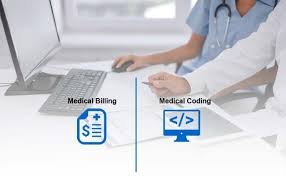🩺 Difference Between Medical Coding and Medical Billing

→ Roles, Responsibilities, and Workflow Distinctions
Medical coding and billing are two essential, yet distinct processes in the healthcare revenue cycle. Both work together to ensure that healthcare providers get paid for services rendered—but their functions are different.
🔹 Medical Coding
Role:
Medical coders convert clinical documentation into standardized codes using systems like ICD-10, CPT, and HCPCS.
Responsibilities:
-
Review physician notes and patient records
-
Assign appropriate diagnosis and procedure codes
-
Ensure coding accuracy and compliance with regulations
-
Support audits and reporting requirements
Workflow:
-
Review medical documentation
-
Translate it into standardized codes
-
Ensure accuracy for billing submission
🔹 Medical Billing
Role:
Medical billers use the codes provided by coders to create insurance claims and send them to payers (insurance companies).
Responsibilities:
-
Prepare and submit claims to insurance companies
-
Follow up on claim status and payments
-
Resolve denials or rejections
-
Generate patient bills for remaining balances
Workflow:
-
Receive coded documentation from coders
-
Create and submit insurance claims
-
Handle reimbursements, denials, and patient billing
✅ Key Differences
| Aspect | Medical Coding | Medical Billing |
|---|---|---|
| Focus | Converting documentation into codes | Submitting claims and managing payment |
| Tools Used | ICD-10, CPT, HCPCS codes | Insurance portals, billing software |
| Interaction | Mostly with health records | With insurance payers and patients |
| Goal | Accurate coding for documentation | Timely and accurate reimbursement |
👉 In short:
Medical coders ensure the accuracy of the codes representing the services, while medical billers ensure the payment for those services is correctly processed.
🎓 Discover one of the best Pharmaceutical Medical coding courses available — click below to explore the course that’s shaping future Medical coding skills.

